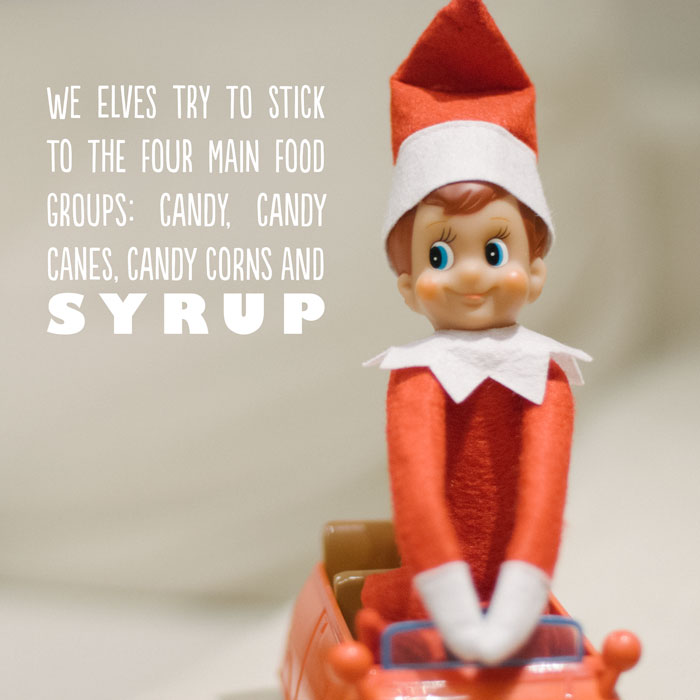It’s a new season. And autumn is bringing cooler weather and winds of change.
Change in life has brewed as well, and this week, after much soul-searching, I’ve returned to work at a full-time “day job” doing what I know, geeky technology stuff that I don’t even want to begin to explain in this space. Let’s just say my job title includes the word “engineer,” I make lots of spreadsheets and PowerPoint presentations, and know more than the average person about where all those photos you post on Facebook get stored.
So why? Why have I chosen to return to this new but familiar path? The reality is that as much as I love my son dearly and am grateful for the time I’ve had with him over the past two years, I’ve never felt settled as a stay at home parent. And I’ve had a bit of an identity crisis as I’ve tried to navigate the uncharted waters of stay at home motherhood. Almost all the women in my immediate and extended family worked and had careers and I’ve recognised that I want to follow in their footsteps. Having a professional career and an identity separate from “mum” feels like what I need to be a whole person, to fill in the missing pieces that makeup the puzzle of me.
I know the challenges which led me to leave the workforce over two years ago haven’t changed or gone away. But I feel like I’m in a better place to manage them than I was with a one year old in tow. Do I feel anxiety and guilt about not being with him as much? Of course. And I’m already filled with fear of missing out on playdates and other activities during the week. But I know I’m a better parent when we have time apart and when I feel better about myself. And the reality is that whether I work or not, school beckons and soon he will be otherwise engaged every day. So having a career gives me confidence, purpose, self-esteem, and independence. And that’s the woman, the example that I want to set for my son.
I’m not suggesting that my path is the right and only path, every family, every mother’s personal situation is unique. I am just thankful that I’ve had the opportunity to sit on both sides of the fence and have a choice. Some women aren’t that lucky. I treasure the time I’ve had with my child during his earliest years and these years outside the workforce have also allowed me to discover and cultivate other talents that will serve me throughout life. I’m still passionate about photography and writing, passions which I’ll continue to follow as I want my right brain to keep getting a bit of exercise. I now understand that pursuing these interests and having a professional career aren’t mutually exclusive.
What Leaning In Means to Me
The funny thing is that versions of this post have sat in my drafts for over two years, an essay about the challenges women face working in technology fields. But I could never finish it. It felt disingenuous to write about encouraging more girls to pursue careers in science, technology, engineering, and math (STEM) when I’m sitting at home.
Then a few months ago I read Sheryl Sandberg’s Lean In and it felt like she’d been digging around in the deep recesses of my psyche. She knew. She knew what it felt like to be the only woman in a room full of pinstripes. She knew about the struggles young girls have trying to fit in. And she knew about the importance of having women in the workforce, in leadership positions, breaking down gender stereotypes and showing young girls that, above all, they have choice.
“As a girl you know that being smart is good in lots of ways, but it doesn’t make you particularly popular or attractive to boys.”
Recently, a friend told me the story of the career counselling she received in high school. A professional educator looked at my friend and told her that becoming a hair dresser or a secretary were her best options and then proceeded to hand her a pamphlet which spelled this out in black and white. It listed boys careers and girls careers in separate columns and she needed to choose one from the girls column, the counselor told her. The most shocking thing about this isn’t that it happened, it’s that it happened in the 21st Century and not in the 1960s. Luckily my friend is full of moxie and rightly knew her “counselors” were full of shit. She went on to get her Masters degree.
But what about girls that aren’t that confident? Girls who believe the stereotypes and accept them as truth. Girls who have an interest in fields like computer science but will accept it when told they can’t be good at it or that it’s just for boys. Girls encouraged to play with Barbie but not LEGO. Girls who at the age of four already know that being a princess makes them fit in better than being a super hero. How do we encourage these girls to dismiss the stereotype and reinforce that they can do anything they put their mind to?
“When girls are reminded of their gender before a math or science test, even by something as simple as checking off an M or F box at the top of the test, they perform worse. Stereotype threat discourages girls and women from entering technical fields and is one of the key reasons that so few study computer science.”
In high school, I wasn’t the popular or pretty one, hanging out instead on the outer edges of the “in crowd.” I enjoyed science and had a biology teacher, a woman, who encouraged me to enter science fairs and competitions, things that certainly make high school teenagers gravitate toward the geek end of the spectrum. And to balance that out, I spent a lot of energy trying to be something I wasn’t, was the cheerleader who never quite fit in. I want to look back on that girl and tell her you like science, good, like science, excel at science no matter how cool or uncool it seems. Because high school will be over one day and you’ll learn that fitting in is much less important than being true to yourself.
And teenage me enjoyed computers, taking lessons in BASIC one summer and learning to use an IBM PC. But when I looked around at my girlfriends in high school and college no one was into computers. There was no path, no example, no female mentor or role model who I could see. So I fell into my first career based on a summer job I felt was “interesting” but that I was by no means passionate about. And, not surprisingly, it was one that I abandoned early on. Doors opened that led to a career in technology and I walked through.
“In my school’s computer science department, there are more Daves than girls.”
Thinking on these stories and experiences and the path I wanted to follow, I began to feel like it was important for me to “Lean In” as Sandberg calls it, to step up and get back to work in an environment where I knew most days I’d be the only woman in the room. I’ve sat in a room full of thousands of men taking part in pretend war games in the name of team building. Did they teach me anything? No. Did they fuel the testosterone in the room? Yes. I’m not excusing big tech firms who spend money on “training” that alienates the minority in the room, but, honestly, the organisers had simply catered to their audience. To change that mindset, you’ve got to start changing the audience. And if I walked out, how could other young women see themselves walking in?
“In comparison to their male counterparts, highly trained women are scaling back and dropping out of the workforce in high numbers. In turn these diverging percentages teach institutions and mentors to invest more in men, who are statistically more likely to stay.”
I’ve interviewed at companies where the only female in a team of systems engineers was the administrative assistant. Did I see myself there? No. I’ve had a senior partner of a firm ask me during an interview if I felt being pretty was an advantage. I wanted to punch him in the face on my way out the door. The fact that the one and only question that came to this executive’s mind when interviewing a candidate for a senior technology role was about her appearance speaks volumes about how much progress women still have to make in being taken seriously and accepted in traditionally male careers.
Just yesterday I came across this article, the stories from several girls who participated in a summer program called Girls Who Code. And their stories moved me to tears, stories about gender bias that still exists in 2013, and stories about what happens when girls are encouraged to break down those barriers.
“I myself had no idea what coding was eight weeks ago, and now I cannot look at my computer without imagining a network of connections, can’t cross the street without picturing the pixels of the stoplight, and I now know that I can go into computer science if I choose to. I don’t yet know what I want to do when I get older, but Girls Who Code has shown me that I don’t have to be afraid of STEM fields, and that with enough time anyone can learn this. The sooner we can erase the social stigma that accompanies certain people in certain jobs, the more productive we will be, and the better off the world will be.” – Corrina Blau
“I always had the idea that computer science was for males, and I could never be successful if I tried to study it. I now know that this is completely wrong.” – Nikki Allen
“Women must realize that the technological revolution is far from over and their contributions will slowly but effectively change the world.” – Emelyn Ruiz
So I want to be a small part of the solution and be the woman in a team of systems engineers, to Lean In. Demonstrating that women have just as much skill and smarts to drive the technology revolution means having a seat at the table full of pinstripes.
++++++++++
What’s all this mean for the blog? Well obviously the time I have to devote to this space has just decreased exponentially. However, I’m determined to keep a presence here as I’ve come to love the creative outlet for my images and words. So I’ll be here but not as often. I have a 52 week project to try wrap up over the next couple of months and otherwise you’ll see posts 2-3 times a month on the usual topics, photography, race diaries, personal stories, and things that inspire me.





